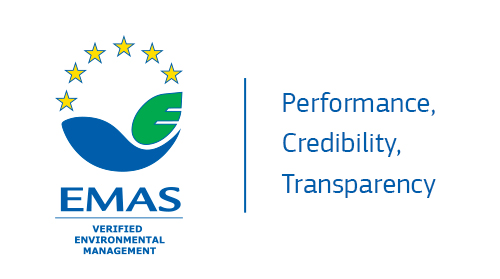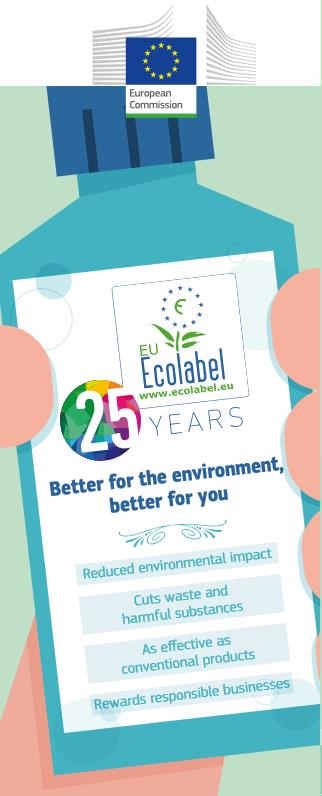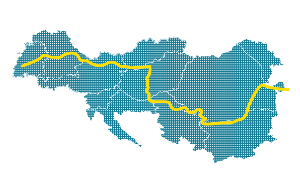Environmental management - What are EMAS, EU Ecolabel and GPP?
Environmental management is no different from other management methods that we encounter in everyday business. As it is necessary to monitor financial flows into and out of the company or to assure a certain level of product quality, it is necessary in the same way to approach the management of the environmental aspects of production or services.
The need for an organized approach to addressing the environmental aspect of business has been fueled by the flood of voluntary initiatives, standards and guidelines around the world that would help in shaping environmental management in organizations. The chemical industry prepared the Responsible Care Program or the Responsible Career Program. Regulation 1836/93 - Environmental Management and Auditing Scheme appeared in the European Union. In the United States, organizations began to implement a proactive environmental policy. The ISO 14001 standard was prepared by an international standards organization that wanted to offer a universal tool that would allow comparison of environmental management irrespective of the organization's activity or size and which would also enforce uniform definitions and specifications. It is based on the principles of "plan, do, check, act", which provides the basis for the continuous improvement of environmental management.
EMAS
The EU Eco-Management and Audit Scheme (EMAS) has been established in EU since 1995. It includes organizations that can demonstrate that they have implemented an environmental management system that meets the criteria set out in the Annexes to European Regulation (EC) No. 1221/2009 i.e. EMAS regulation. In addition to the environmental management system based on related requirements and principles as defined by SIST EN ISO 14001: 2005, organizations must, before registering with the competent authority, prepare an environmental statement summarizing the main characteristics of the organization and its activities, the introduced environmental management system and the values of the main environmental indicators.

The EMAS logo shows that the organization has an environmental management system that meets the business activities and requirements of the legislation. Registered company logo can be used on business documents, promotional material, public environmental statements, web pages, etc. Since the registration is strictly related to the activity of an organization, it must not be used on products or on their packaging in order to avoid misleading customers. The promotion of certain more environmentally-friendly products or services is the domain of EU Ecolabel.

Good practice example:
EMAS Case study: Spain. A graphic design and printing service company La Page Original from Spain with 2 employees improved their environmental performance while thinking in a life cycle perspective.
Link to the EMAS Case study
EU Ecolabel
Despite the fact that some EU countries have national schemes for environmentally friendly products, the need has been identified to create a common European label that would be recognizable throughout the European market and its award would be based on uniform criteria that would be applied in all Member States.

The voluntary EU Ecolabel scheme has been in place since 2002. The label can be obtained by a product or service that is identified within a product group for which conditions or environmental criteria have already been laid down and must be met by them. Environmental criteria for the label comply with the requirements of ISO 14024 and are prescribed in the Commission's decisions setting out the precise environmental criteria for presenting the logo for each product group or service. The method of implementing the scheme is laid down in the unified Regulation (EC) No. 66/2010 on the EU Ecolabel.
Good practice example: EU Ecolabel connects with consumers with on-line catalogues of products and tourist accommodations. With products consumer can search through product groups (e.g. cleaning up, household appliances, paper products, etc.) and with accommodations through countries, regions or cities.
Link to the EU Ecolabel Product Catalogue
GPP
Europe's public authorities are major consumers. By using their purchasing power to choose environmentally friendly goods, services and works, they can make an important contribution to sustainable consumption and production - what we call Green Public Procurement (GPP) or green purchasing.
Although GPP is a voluntary instrument, it has a key role to play in the EU's efforts to become a more resource-efficient economy. It can help stimulate a critical mass of demand for more sustainable goods and services which otherwise would be difficult to get onto the market. GPP is therefore a strong stimulus for eco-innovation.
To be effective, GPP requires the inclusion of clear and verifiable environmental criteria for products and services in the public procurement process. The European Commission and a number of European countries have developed guidance in this area, in the form of national GPP criteria. The challenge of furthering take-up by more public sector bodies so that GPP becomes common practice still remains. As does the challenge of ensuring that green purchasing requirements are somewhat compatible between Member States - thus helping create a level playing field that will accelerate and help drive the single market for environmentally sound goods and services.
Good practice example:
Slovenia: A Decree on green public procurement has been in place since 1.1.2017. The Slovenian Ministry of Environment and Spatial Planning has established a “GPP help desk” which is the centre of educating and counselling all public authorities’ personnel dealing with GPP.
Link to European Commission’s GPP Training Toolkit
Regardless of the chosen management system, it must be supported by top management in the company, which must provide the resources or resources necessary for the introduction and control of the organization's environmental management system. The introduced measures aimed at controlling the processes or managing them require a proper allocation of human and financial resources and the proper use of technological possibilities.

